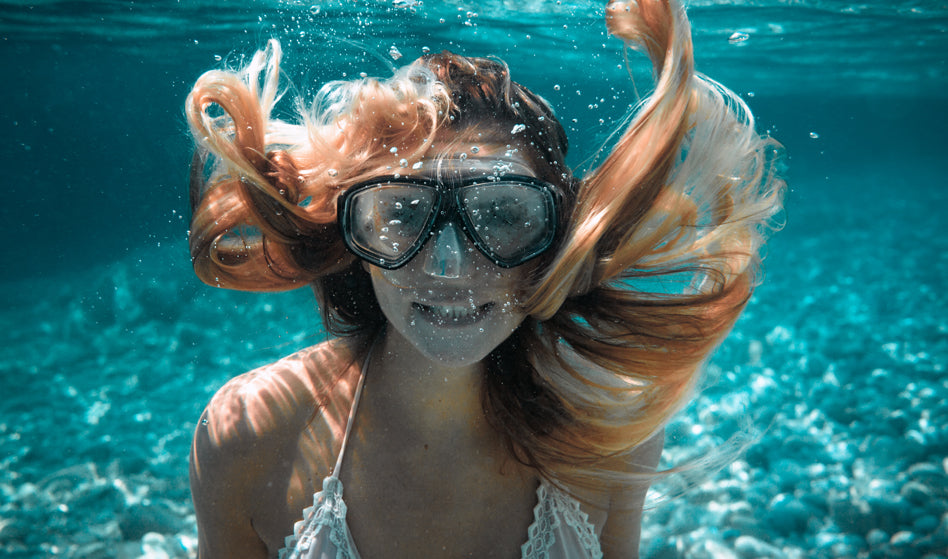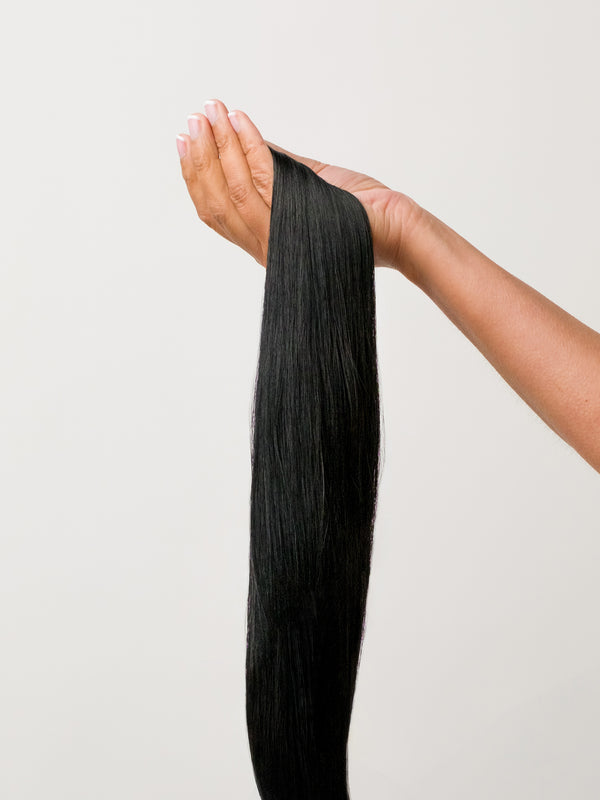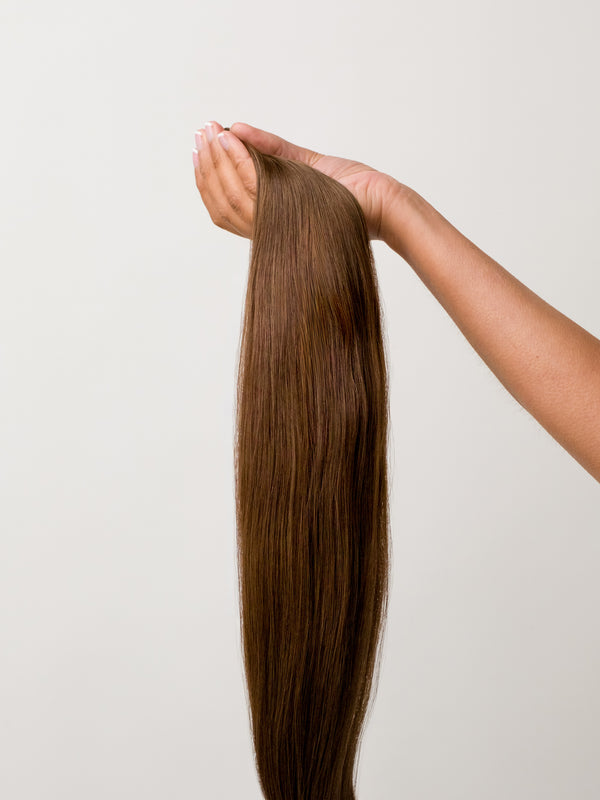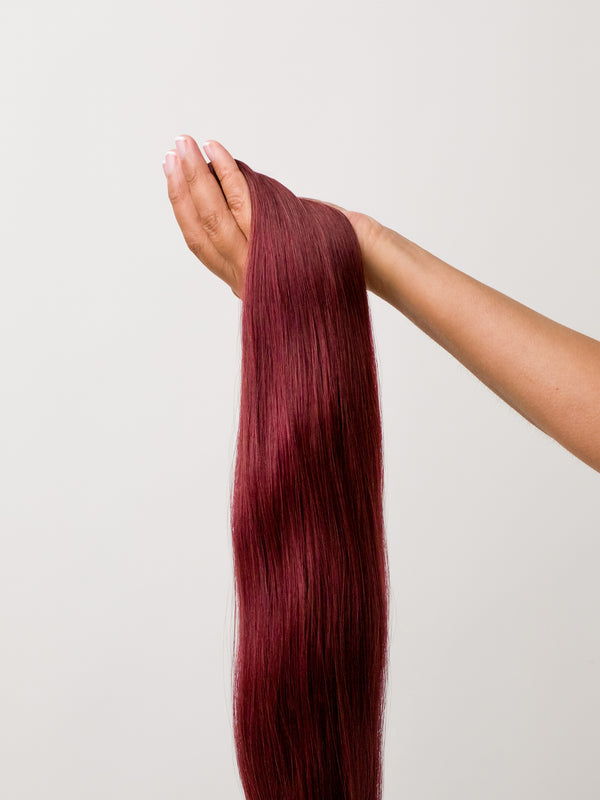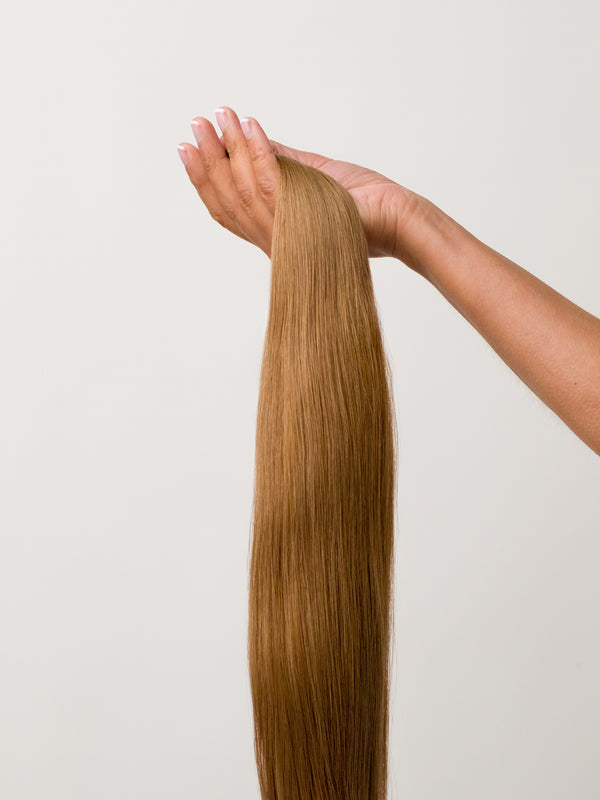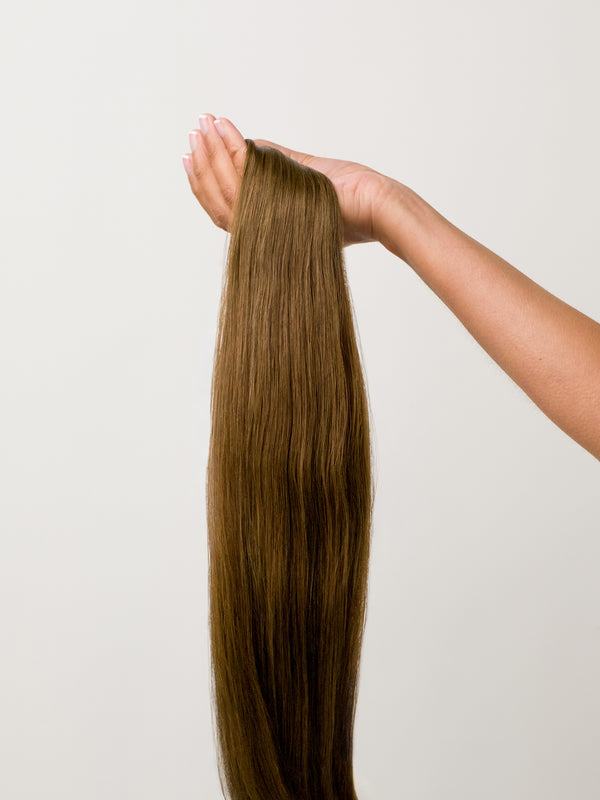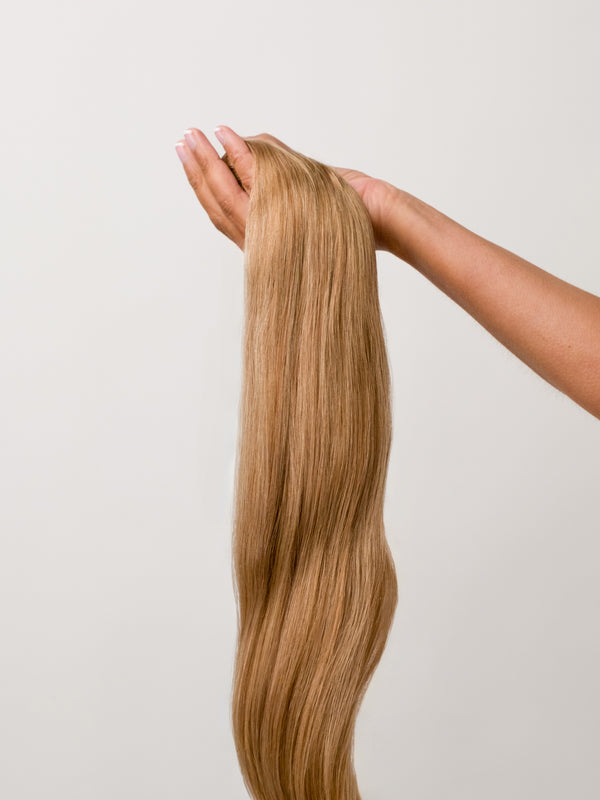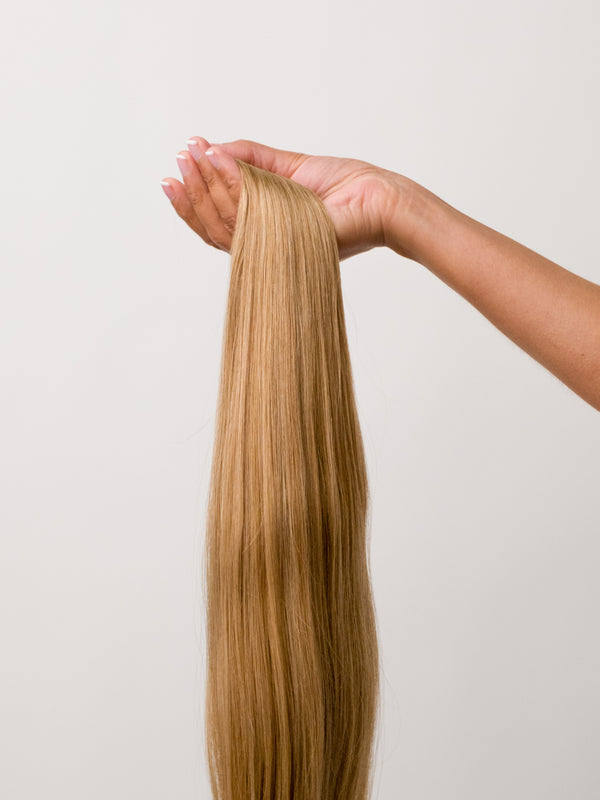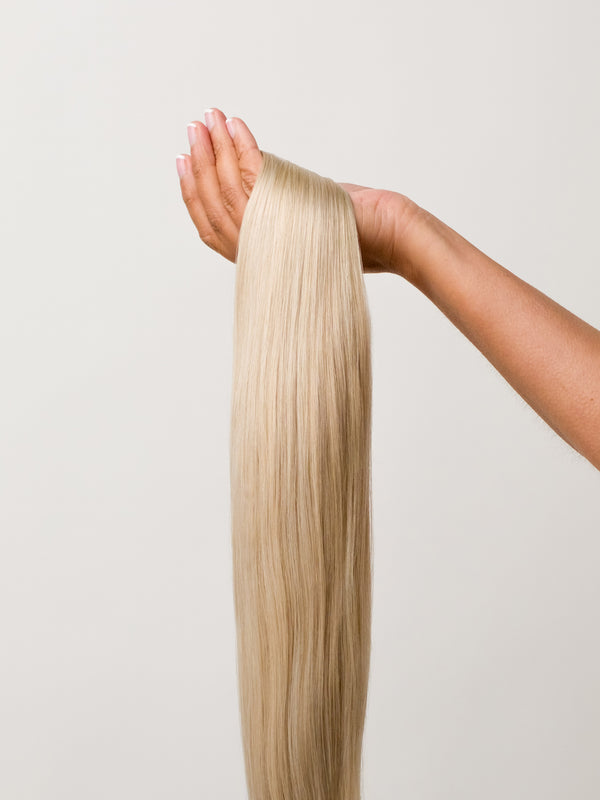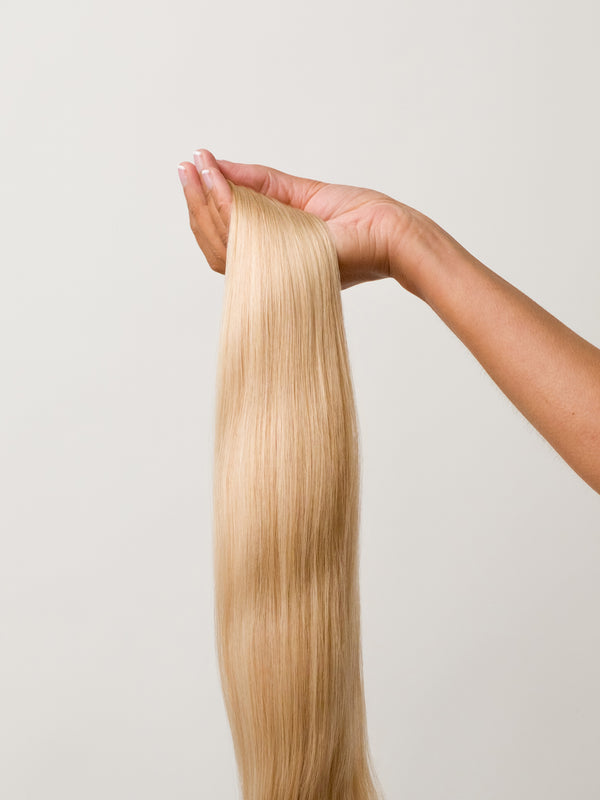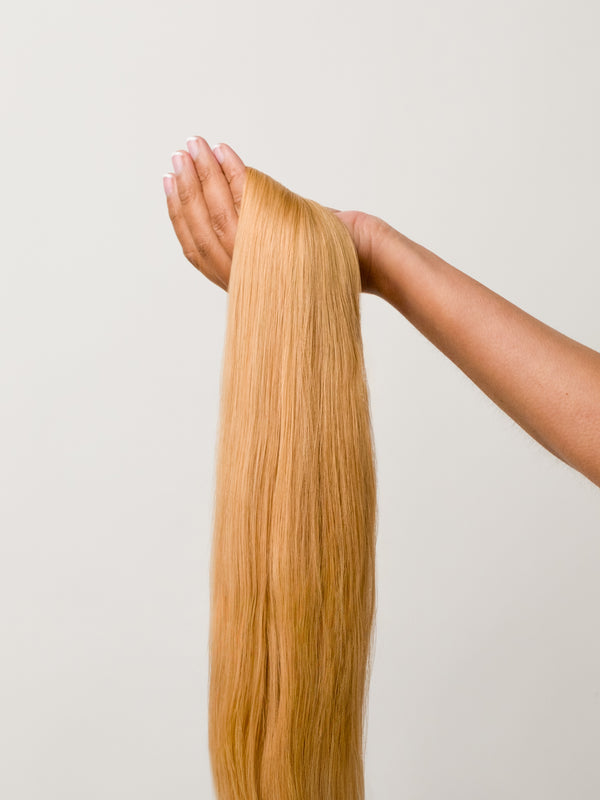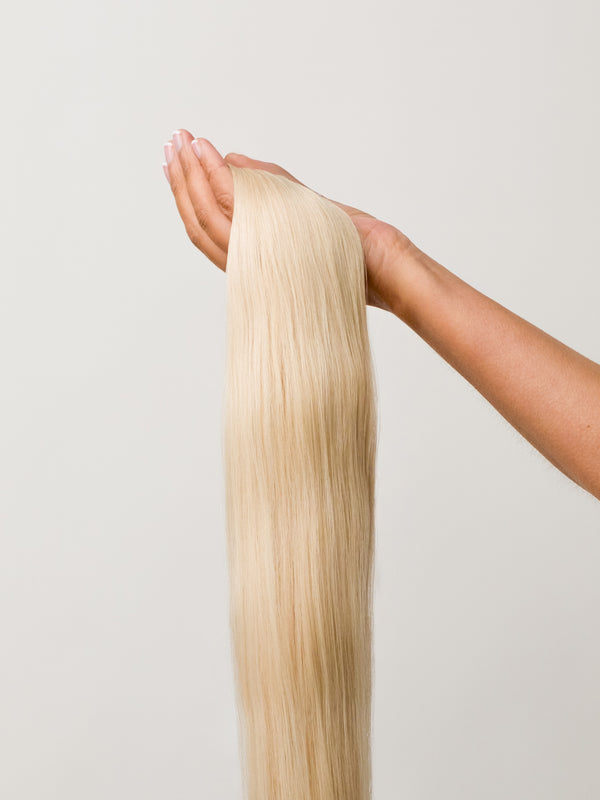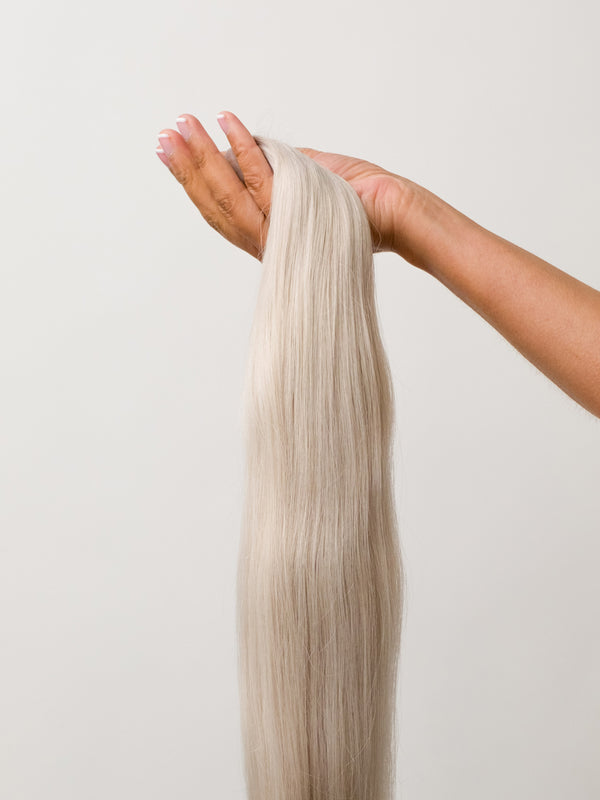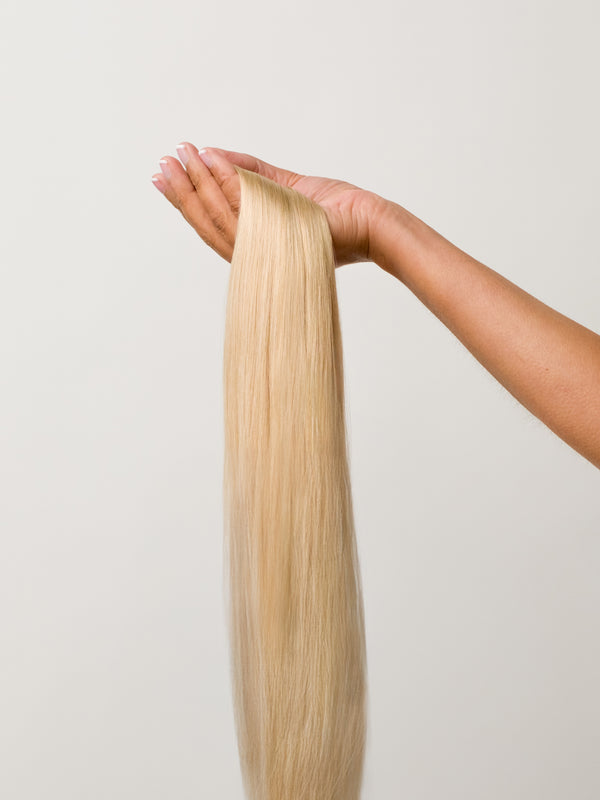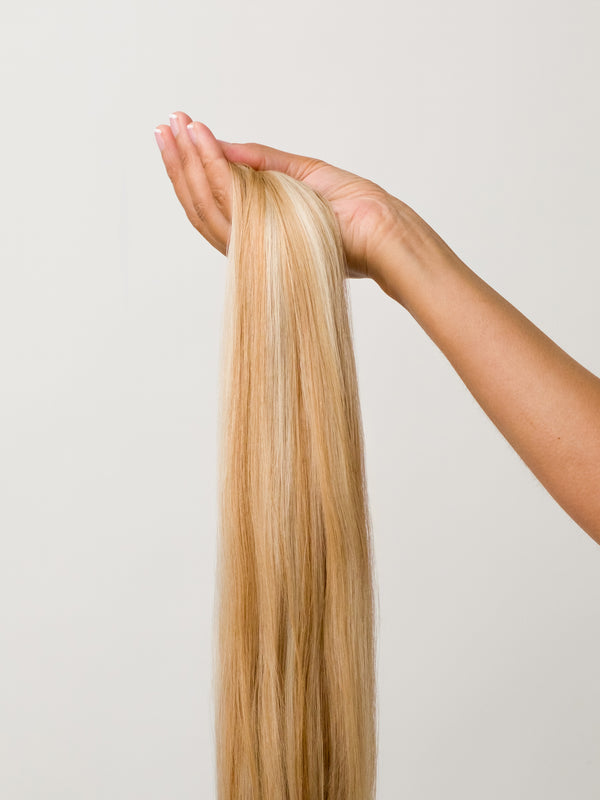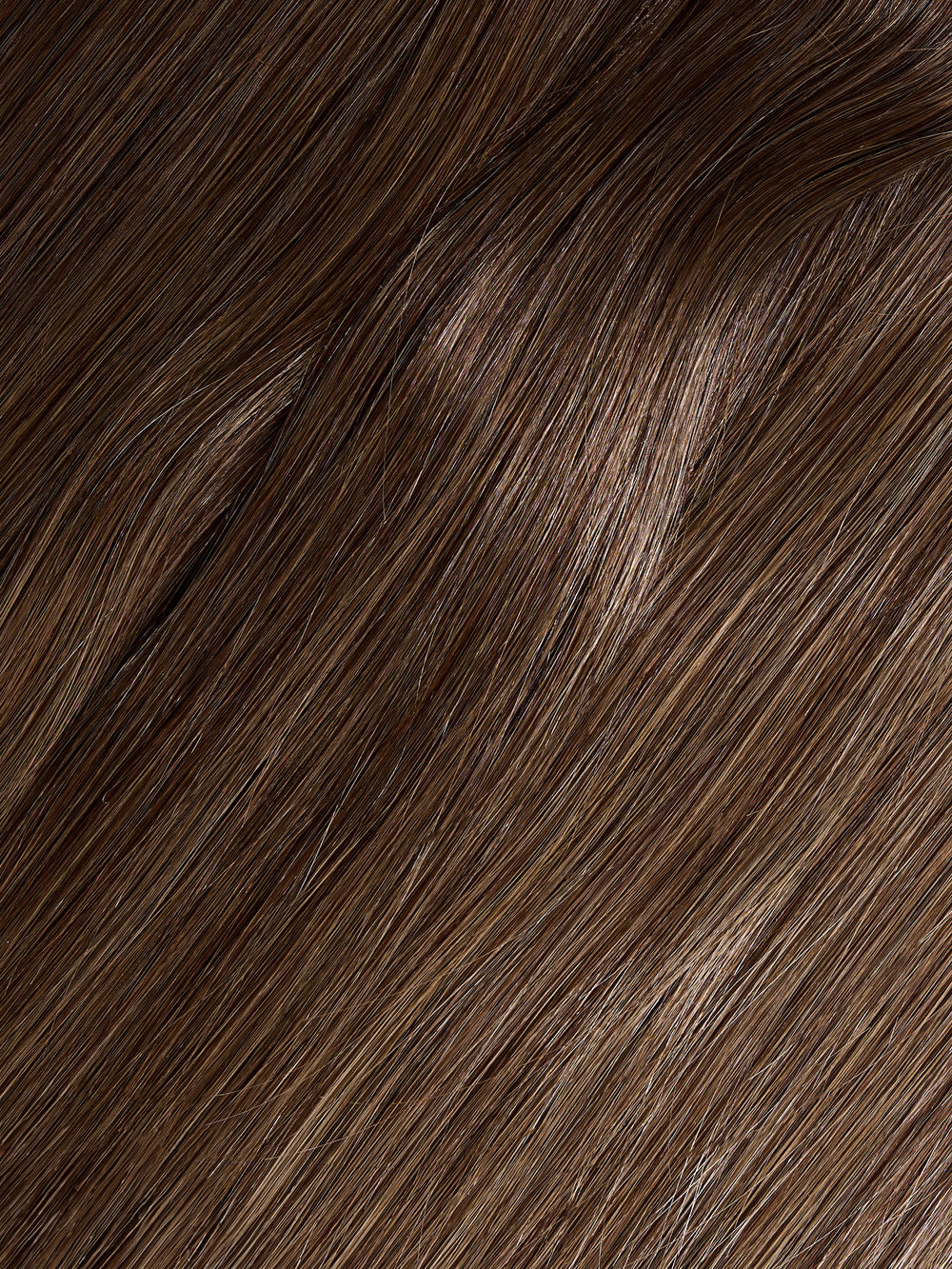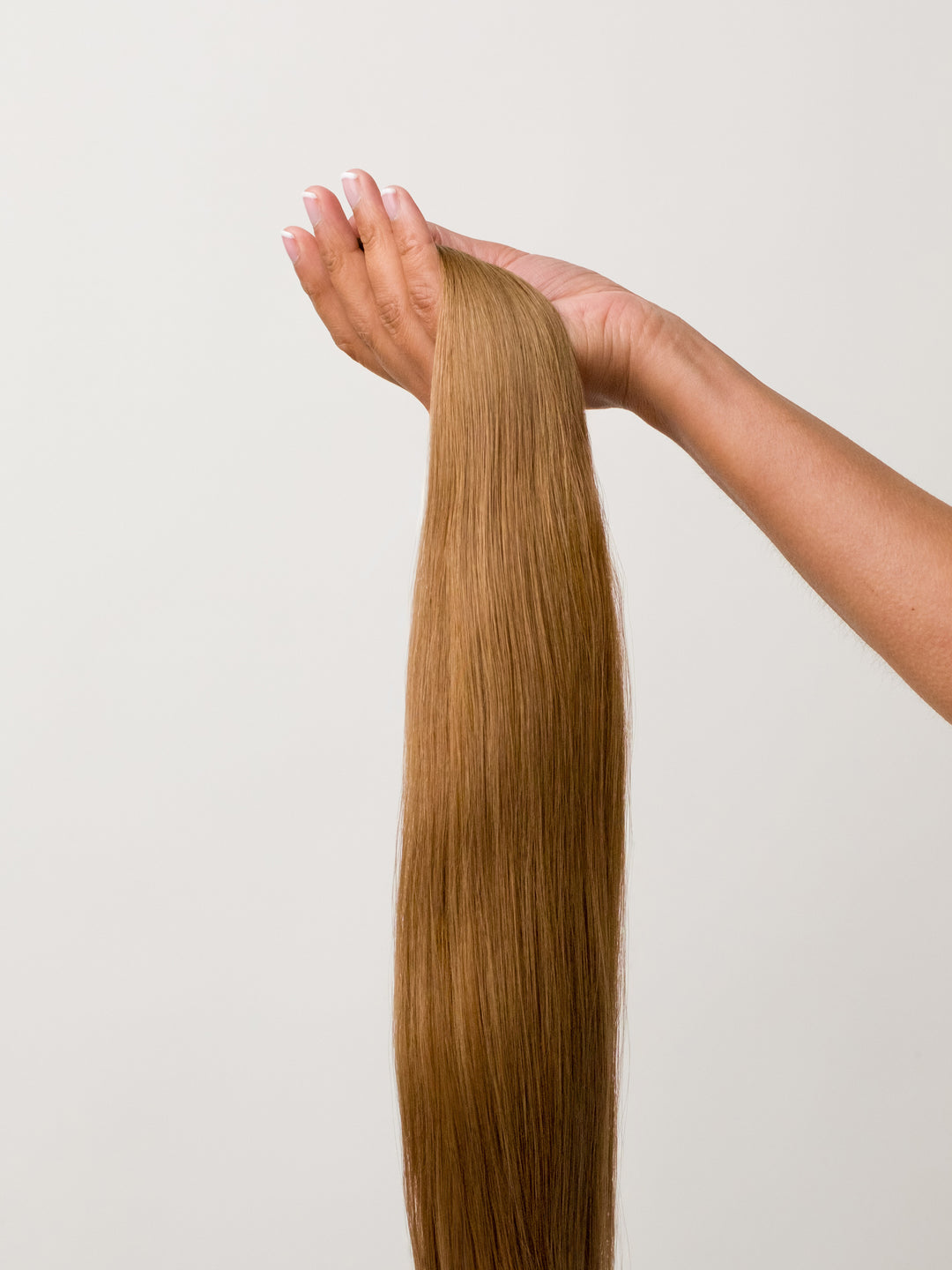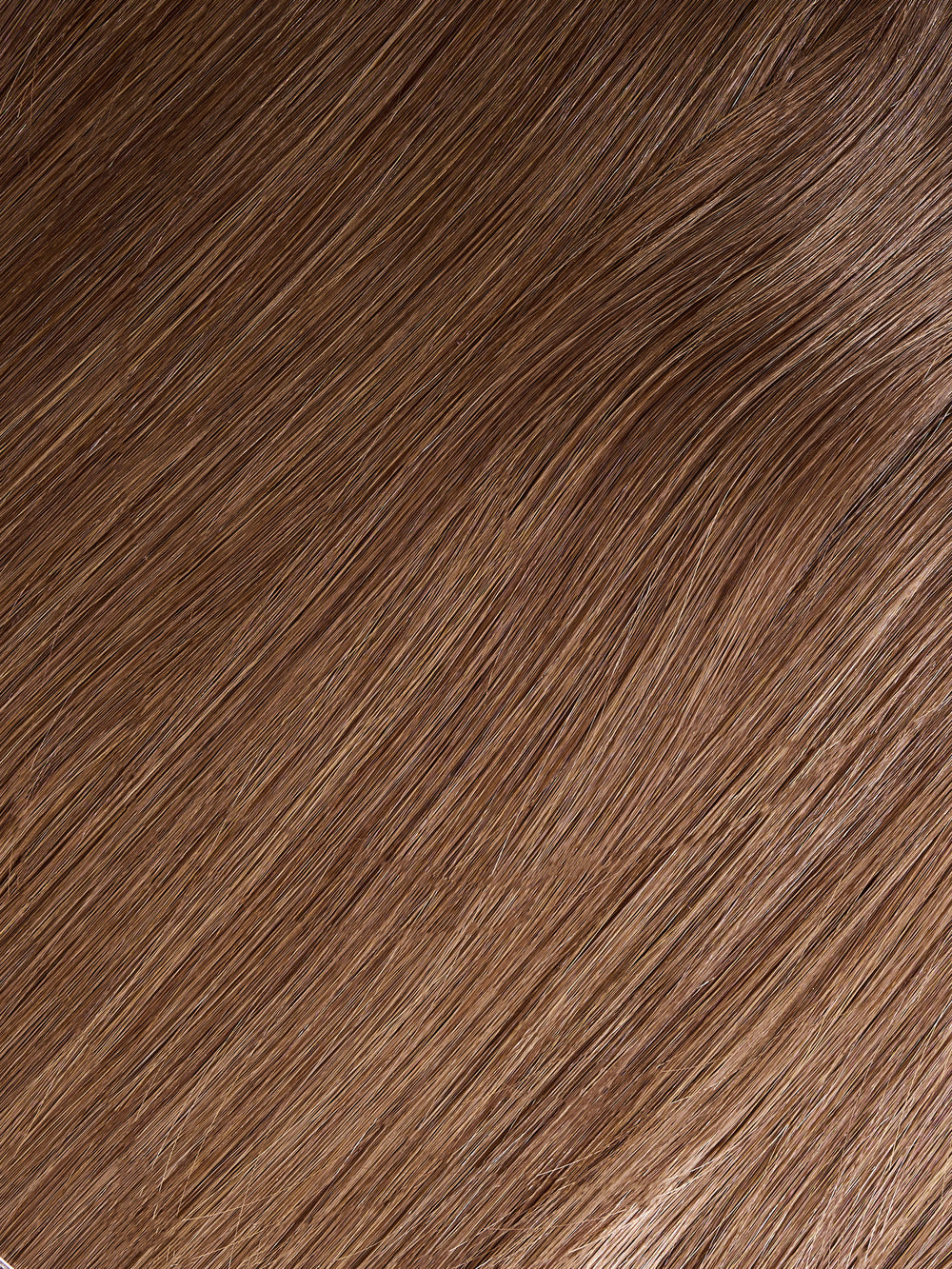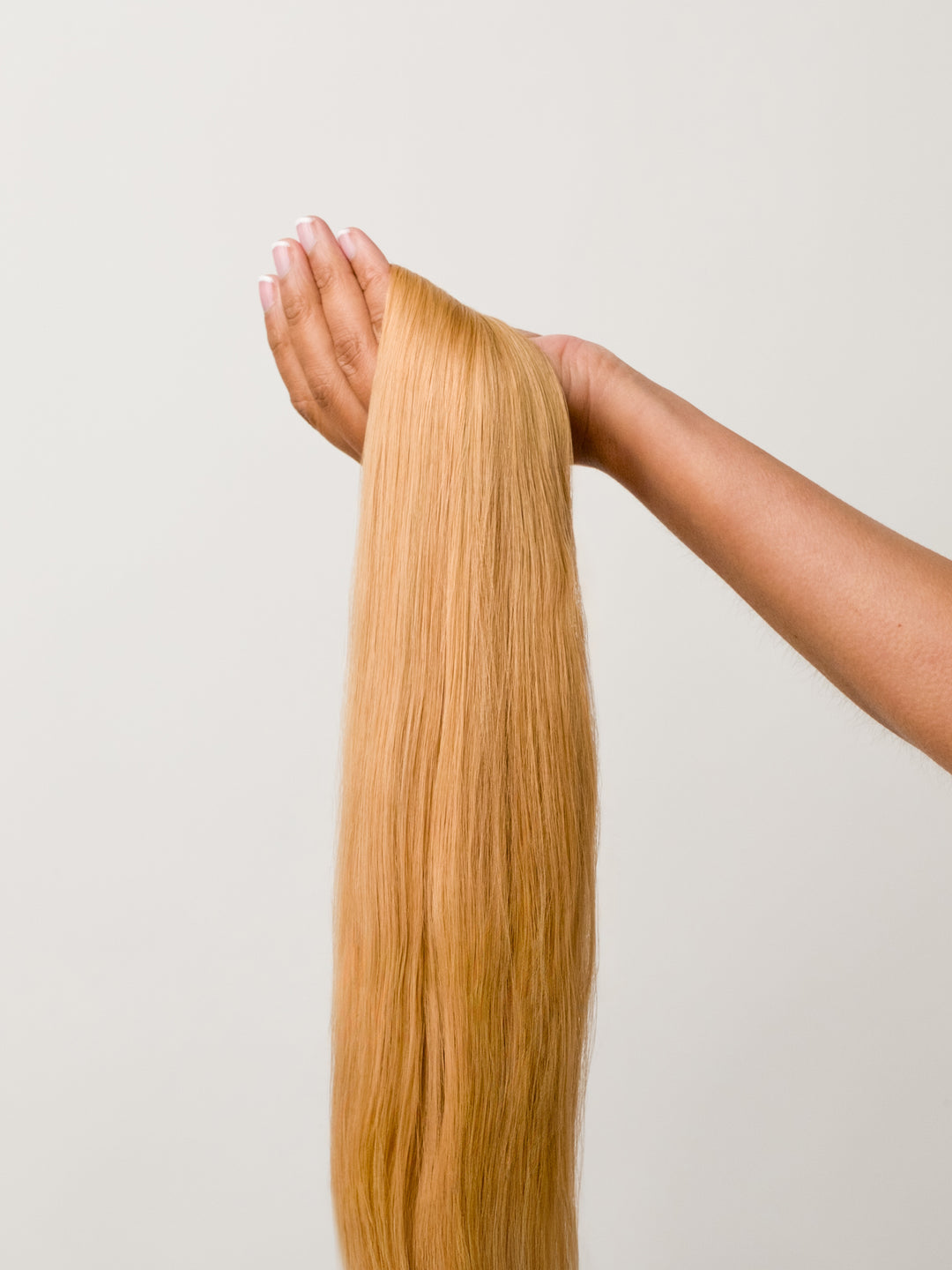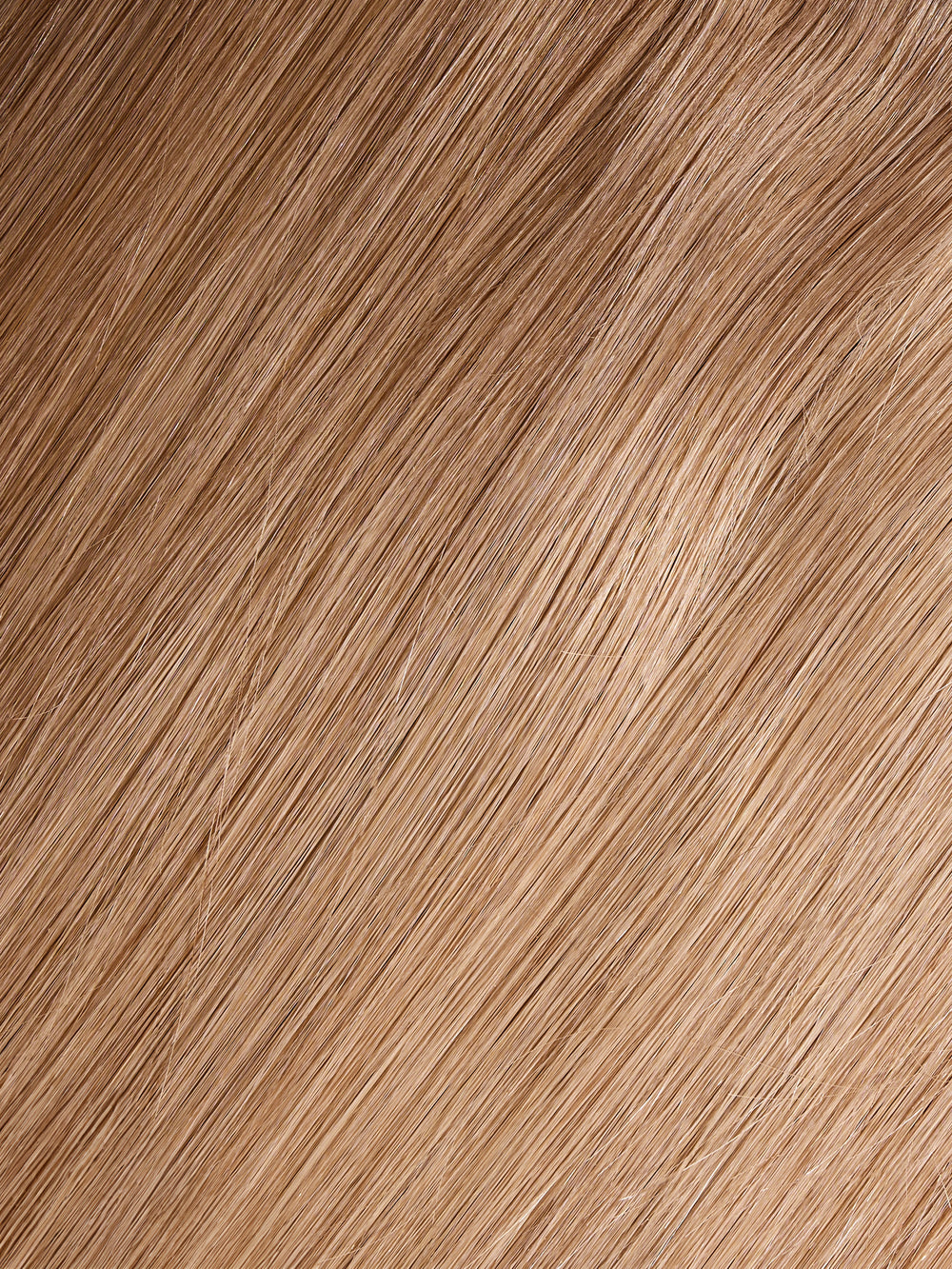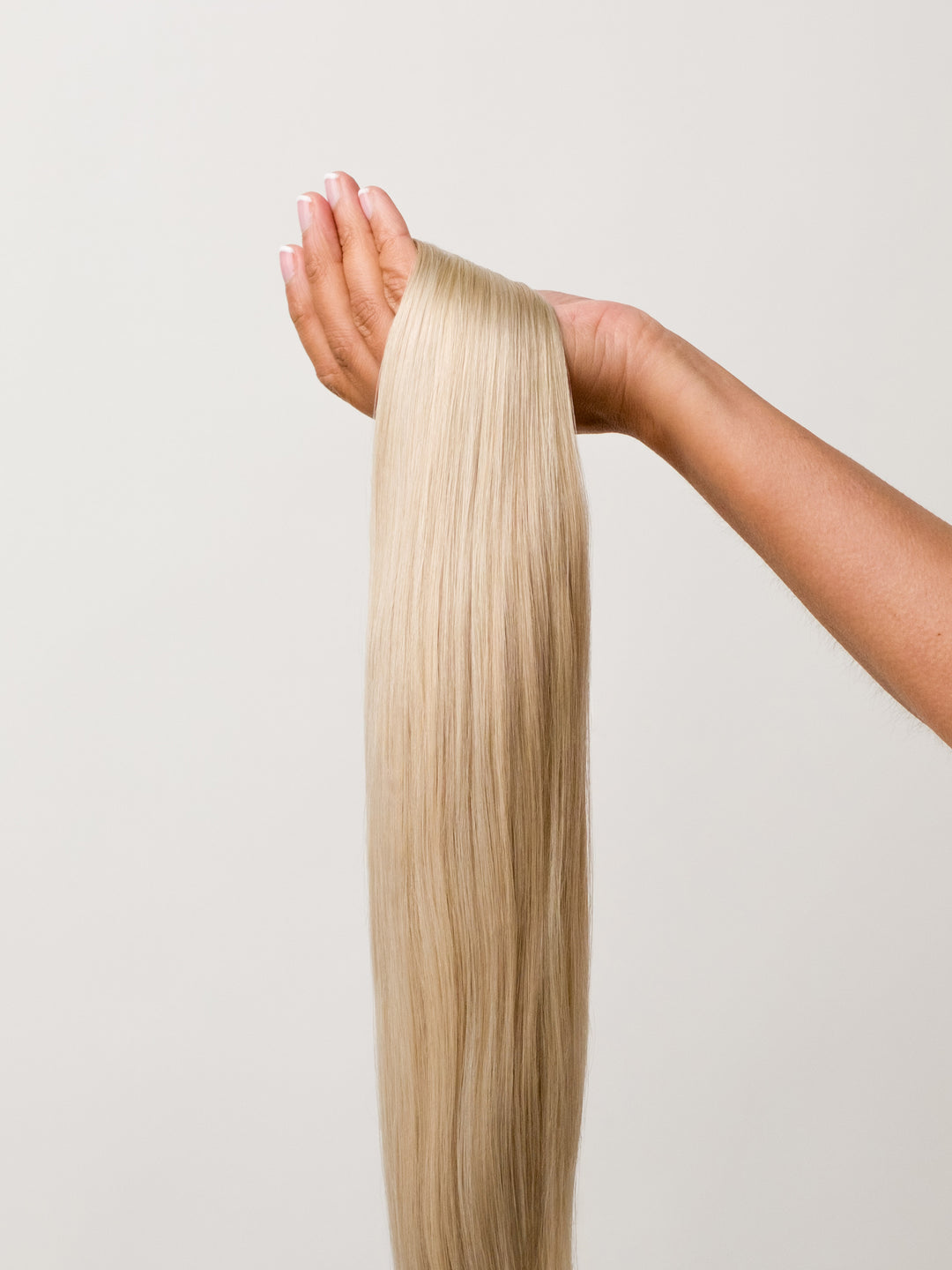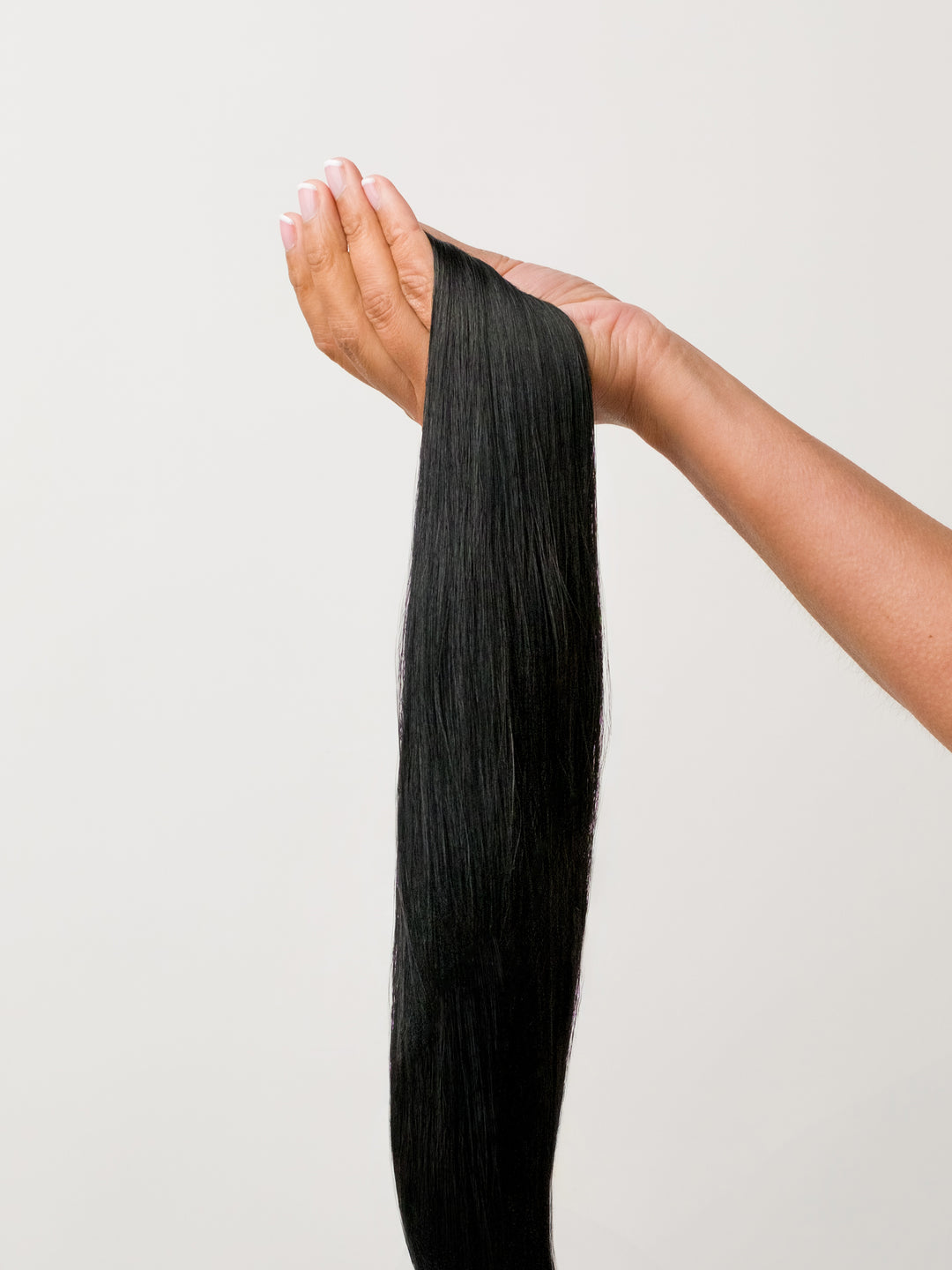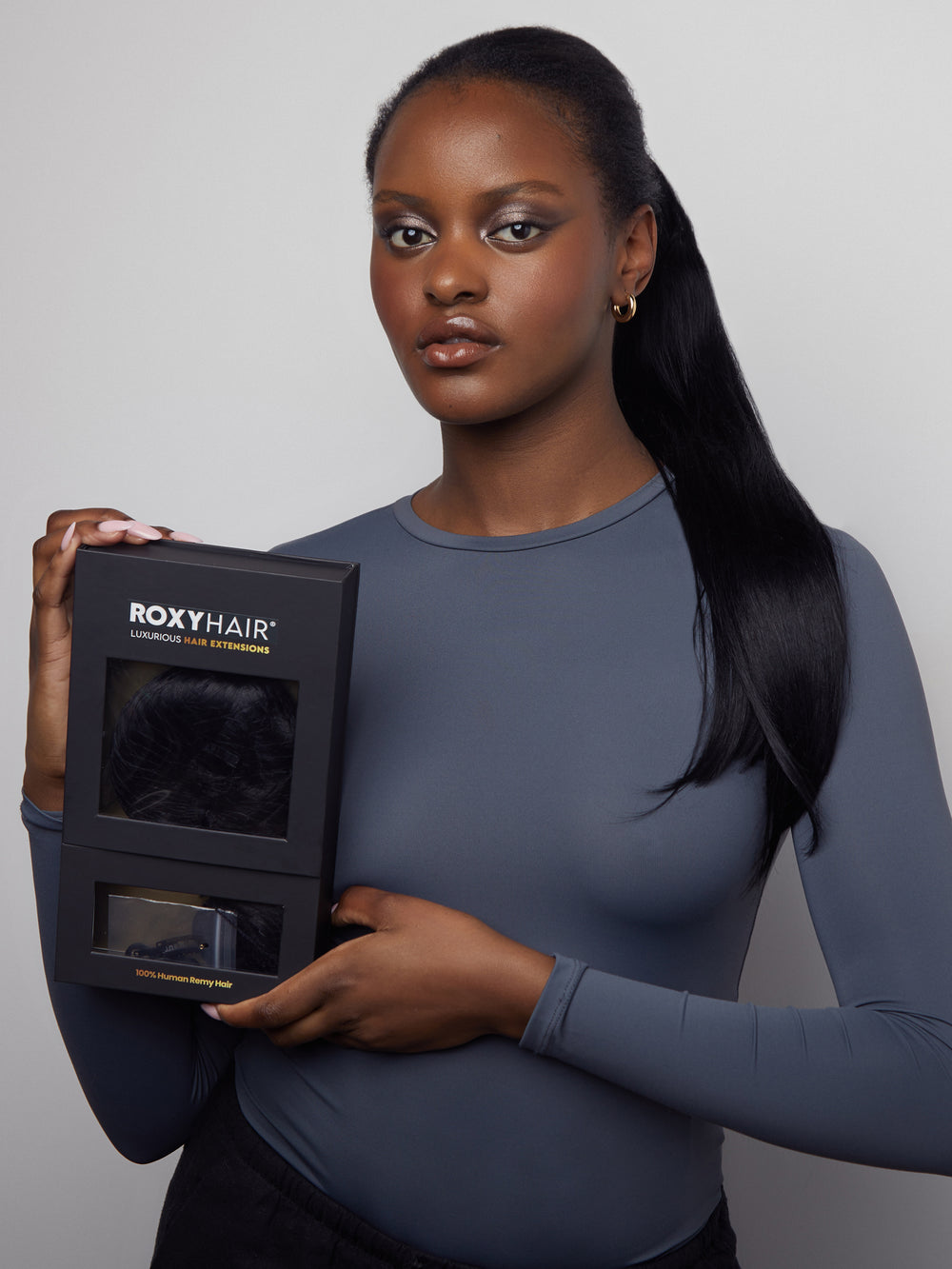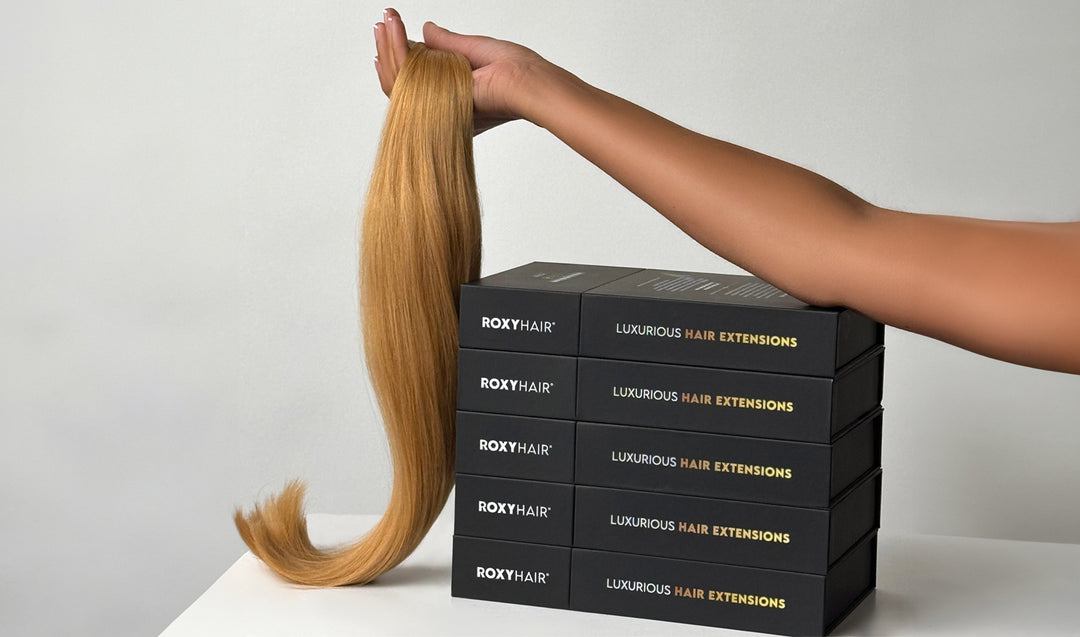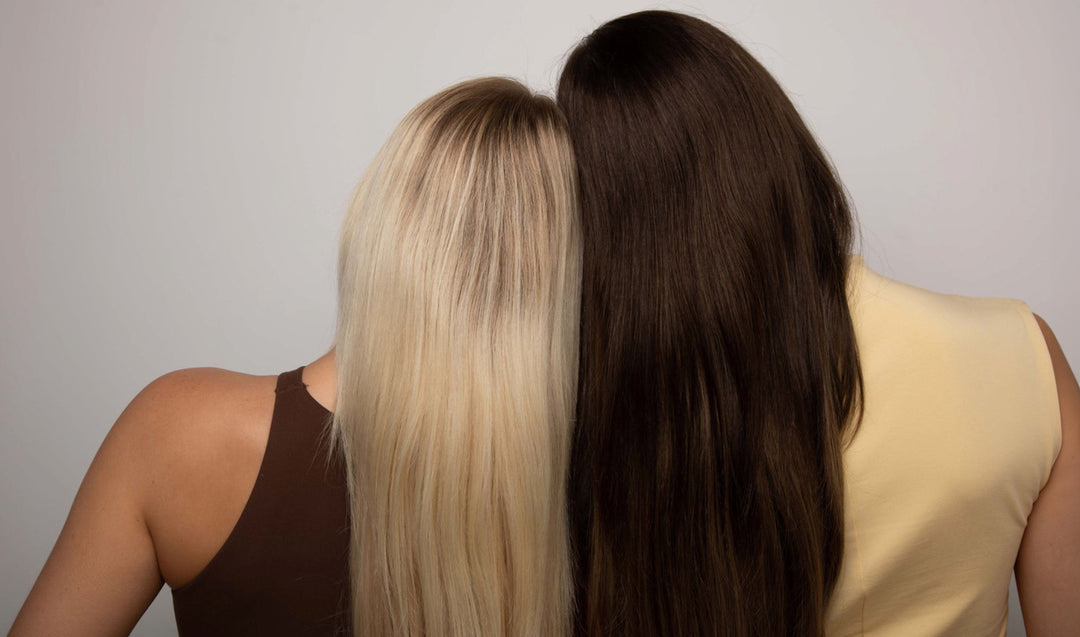Summer is all about sunshine and getting in fun outdoor adventures. It's a time for soaking up the sun's rays, attending beach parties, and taking dips in the water. The warm season presents the perfect opportunity to spend quality time by the pool, sea, or ocean. Your hair extensions are like delicate flowers in a garden. Yes, they need sunlight but just as flowers need protection from harsh elements to stay vibrant and blooming, your extensions require extra care.
However, many people with hair extensions worry about damaging them in water. The good news is you can swim with tape-in extensions if you take proper care. By following the right tips, your extensions will stay beautiful while you enjoy summer activities.
Here, we'll walk you through protecting your extensions from chlorine and salt water, share tips to avoid tangles, and cover the essentials for post-swim care. Follow along, and you'll be able to take a dip without worrying about damaging your extensions.
What You Can Learn:
-
Understand the potential risks of chlorine, salty water, and tangling on hair extensions
-
Learn essential pre-swim protective measures to safeguard your extensions
-
Discover styling tips for wearing extensions while swimming
-
Master post-swim care routines like rinsing, conditioning, and detangling
-
Gain insights into the swimming compatibility of different extension types
-
Know when to seek professional help for maintaining your extensions
Impact of Water in Hair Extensions

Wearing hair extensions while swimming in the ocean or pool can seem harmless, but you need to be careful.
Salt water and chlorinated water can damage the extensions, making them dry, brittle, and more likely to break over time. Extensions are more fragile than natural hair, so they are more prone to breakage and dryness. Natural hair gets nourishment from the oils in the scalp, but extensions don't. Chlorine can also turn lighter-colored extensions an unpleasant greenish color, which looks unattractive.
The possibility of tangling and matting when swimming with extensions is a serious concern. The bonds holding the extensions in place may get loosened once they absorb water, creating a messy, tangled mess. Ocean water is especially known to cause severe matting and tenacious knots throughout the extensions. Should you have clip-in hair extensions, this could get even worse since they could tangle with your natural hair and make things much worse. Even without extensions, detangling hair after swimming can be difficult, and if you're not very delicate and careful in your technique, there's a significant chance of breaking.
Pre-Swim Hair Extension Care

If you want mermaid-like hair this summer, your hair extensions require some special care. Being proactive helps prevent damage. Just as you'd apply sunscreen before sun exposure, your extensions need protection too. Consider this pre-swim routine like protection for your artificial hair:
Wet Hair Extensions First
Before swimming, drench your extensions thoroughly with fresh water from roots to ends. Dry hair readily absorbs chlorine and salt water, but pre-wetting fills the hair so there's less room for the pool/ocean variety to sneak in - like having a healthy meal before a party to avoid junk food cravings. Once saturated, use a conditioner to create an extra protective barrier against moisture loss.
Applying a Protective Hair Mask
The right oils like almond, olive, or coconut oil act as trusty bodyguards for your extensions, warding off chlorine and salt water damage while keeping them lush. Leave-in conditioners create an invisible barrier too, further shielding locks. If sunbathing, use a UV protection spray - it's sunscreen for your hair.
Secure Your Hair Extensions
Hairstylists advise keeping extensions up and away from water submersion. Styles like high buns, braided buns, ponytail or pigtail braids work well. Get creative with updos like an upside-down braid twisted into a high bun. Tying hair up also prevents color transfer or matting from sunscreen residue on skin.
Take precautions with sunscreen too - wash hands after applying to avoid getting lotions in the hairline area which can loosen tapes. For maximum protection, wear a swim cap that coordinates with your swimsuit to fully shield extensions from dryness and breakage.
Swimming Accessories for Hair Extension Protection

Accessorizing for swimming with hair extensions makes a big difference. Water, chlorine, and salt can tangle, mat, and discolor extensions. Several accessories help protect your extensions while swimming.
-
Use a snug silicone or latex swim cap to protect hair extensions. It keeps water away from your hair. Pick one that fits well - it's like finding the perfect hat. A silicone cap stretches to accommodate extensions while keeping them bone dry. Latex caps seal tightly for great protection.
-
For a softer feel, consider fabric-coated swim caps. They're gentle and less likely to snag extensions. If you have lots of hair, a custom-sized cap ensures everything stays tucked in. Swim caps aren't just for dryness - they protect your hair investment.
-
Use gentle hair ties and clips to secure extensions. Silk, spiral, or coiled hair ties won't leave marks or creases. They're reliable friends for your hair. Opt for clips without sharp edges or metal that could snag. Or try a waterproof neoprene scrunchie - it's the all-weather tire of hair ties, keeping extensions in place.
-
Double-sided waterproof tape secures extensions and resists water. A microfiber hanger prevents tangles when drying extensions post-swim. Microfiber towels gently remove excess moisture too.
Post-Swim Hair Extension Care

Professional mermaids often rock flowing hair extensions when performing underwater. But those lush mermaid locks can become a safety hazard if not secured properly - the strands might get caught in pool filters or equipment! To prevent that, mermaid performers use tricks like attaching the extensions to bathing caps or putting them in stretchy fabric "hair tubes" for easy removal. Even if you're just wishing to channel your inner mermaid at the pool, you'll want to take similar precautions with any hair extensions. Here's how:
Rinsing and Washing Your Hair Extensions
After swimming, rinse hair extensions right away with cool or lukewarm water. Quick rinsing prevents damage from harsh chemicals like chlorine or salt and provides extra protection. The gentle water temperature helps avoid tangling and further problems.
Next, use a mild, sulfate-free shampoo and follow with a deep conditioner. This two-step routine restores lost moisture from swimming and gives extra protection. The shampoo removes chemical residue gently. The conditioner helps extensions recover from drying effects of pools or the ocean.
Finally, rinse the conditioner with cool water. The cooler temp seals the hair cuticle shut. This locks in moisture and nutrients from the conditioner, providing extra protection. Your extensions are now silky, revived, and ready to style again with lost moisture restored.
Drying and Detangling Your Hair Extensions
After washing extensions, don't rub them dry with a regular towel like drying a wet dog. Instead, gently pat them with a soft microfiber towel. Microfiber is much gentler than harsh, abrasive towels. For convenience, use a microfiber towel scrunchie to keep damp hair off your face while drying.
Next is detangling, which requires a delicate approach. Start at the ends and work upwards slowly with a wide-tooth comb or detangling brush. This prevents pulling and breakage. Don't roughly handle extensions. Use a conditioner and lots of patience to carefully work through knots and tangles.
With extensions detangled and drying properly, you're on your way to restoring their smooth, tangle-free appearance. Take your time and be very gentle throughout the process.
Shop Roxy Hair
Regular Maintenance for Swimming with Hair Extensions

Hair extensions, like natural hair, can get damaged by summer fun - the sun, salt water, chlorine, and sweat. Swimming can leave extensions dry, tangled, and messy. Since extensions are an investment, it's smart to prevent this damage while still enjoying water activities. The best way to protect your extensions is:
Deep Conditioning Treatments
After swimming exposes your hair extensions to harsh conditions, applying conditioner using a deep conditioning hair mask can be like a soothing spa treatment to revive them. It reintroduces intense hydration they desperately need. Think of it as a refreshing drink for your parched, thirsty extensions, quenching them and bringing them back to life.
When choosing a deep conditioner, look for one with nourishing ingredients like oils, butters, and proteins to really moisturize. Avoid anything with sulfates, alcohols or harsh chemicals that can further dry out the extensions. A creamy, rich formula is best to really replenish that lost moisture.
Applying the deep conditioner thoroughly from roots to ends, be sure to fully saturate the extensions. Leave it on your head for the full recommended time - at least 10-15 minutes usually - to allow it to fully absorb and work its magic. Then rinse with cold water to seal in the beneficial oils and nutrients.
Extension Type-Specific Care
When it comes to maintaining your hair extensions, one size does not fit all. Permanent extensions like I-tips or tapes might be the marathon runners of the extension world, built to withstand the rigors of swimming with more resilience than clip-ins. These types are like the endurance athletes—low maintenance and reliable, making them a smart choice for those who frequent the water.
On the flip side, clip-ins, such as those from Foxy Hair®, are like the sprinters—great for a quick burst of glamour but not designed for prolonged exposure to water. They’re best left on dry land, or at the very least, kept well away from the water to avoid tangling and potential damage.
Remember, knowing how to provide proper care for your specific type of hair extensions is like having the right map for a treasure hunt—it’ll guide you to the prize of hair healthy, long-lasting extensions.
Hair Extension Types and Swimming Compatibility
Hair extensions allow you to experiment with different looks and add length and volume so that you can slay while on a vacay. There are various hair extension types available these days, catering to different need. To help you select the right option, here's an overview of some popular extension methods:
Here's an overview of different hair extension types and how compatible they are for swimming:
-
Tape-In Extensions - These use adhesive strips to bind the wefts to your natural hair. They are not recommended for swimming as the adhesive can loosen and cause slippage when exposed to water, chlorine or salt water.
-
Keratin Bonded Extensions - These have keratin-based protein bonds attaching the hair to your scalp. They can withstand some swimming but the bonds may loosen over time from repeated exposure to water and chemicals. Take precautions.
-
Clip-In Extensions- These temporary clip-in wefts are the most swim-friendly option since they detach fully from your hair. Just remove before swimming to avoid tangling or damage.
Other Semi-Permanent Types:
-
Micro-Link - Small silicone-lined rings crimp hair to your natural strands. Somewhat water-resistant but may loosen with frequent swimming.
-
Sew-In Weaves - Hair wefts braided onto cornrows. Water exposure can cause excessive tangling and matting.
When to See an Extensions Specialist
You'll want to book an appointment with an extensions expert if you notice any of these issues with your hair extensions:
-
Excessive shedding - It's normal for extensions to shed a bit, but if you're losing more than a few strands per day, it could mean they were installed too tightly or your natural hair is damaged.
-
Matting/Tangling - Stubborn knots and matting is a sign the extensions need adjusting or the method of attachment isn't working for your hair type.
-
Extreme Dryness - Extensions can't produce natural oils, so if they feel excessively dry and brittle, it likely means they aren't being properly moisturized.
-
Visible Gaps - If you can see spaces forming between your roots and the extension attachments, that means your hair is growing out and moving the extensions too far from your scalp.
These are all signs that it's time for professional maintenance and advice from a certified extensions specialist. Don't try removing or re-installing them yourself, as this can cause irreversible damage.
Regular salon visits every 6-8 weeks are crucial for extensions to look and feel their best. The stylist detangles, repositions loose strands close to your scalp, and removes product buildup that can cause matting.
Even if you diligently care for extensions at home, it's easy to miss issues developing underneath. An expert set of eyes assesses the overall integrity during appointments to catch potential problems early before they become unfixable.
Skipping these maintenance sessions is one of the biggest mistakes you can make. Your extensions have a maximum recommended lifespan that decreases significantly without proper adjusting and care from a specialist.
Summary
Swimming with hair extensions is totally possible if you take the right precautions. Before hitting the water, protect your extensions with a leave-in conditioner or hair serum to minimize damage. After swimming, rinse extensions thoroughly with cool water to remove chlorine or salt. Use a sulfate-free shampoo and deep conditioning mask to revive moisture. Be gentle when detangling and allow extensions to air dry fully.
With proper preparation and care, you can confidently rock your gorgeous Foxy Hair® Extensions poolside or at the beach! Don't let swimming ruin your lush locks - treat your extensions right and they'll keep you looking fabulous all vacation long. Explore our high-quality, swim-friendly extension options a today!
Frequently Asked Questions
Does swimming affect hair extensions?
Yes, swimming can affect hair extensions by weakening the bonds when they get wet.
How do you wear extensions when swimming?
The best way to protect your hair extensions while swimming is by wearing a swimming cap.
How do I protect my hair extensions in my pool?
To protect your hair extensions in the pool, apply leave-in conditioner before swimming, wear a swim cap, and rinse and condition your extensions after swimming.
What's the best way to detangle hair extensions after swimming?
To detangle hair extensions after swimming, gently rinse them with cool water and use a wide-tooth comb or detangling brush to carefully work through the tangles, starting at the ends and moving upward.
How often should I deep condition my hair extensions if I swim regularly?
You should deep condition your hair extensions after swimming as often as needed, depending on how frequently you swim and the condition of your extensions.




